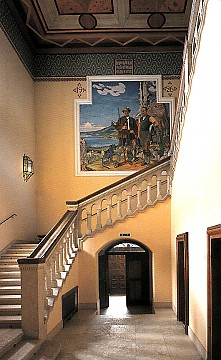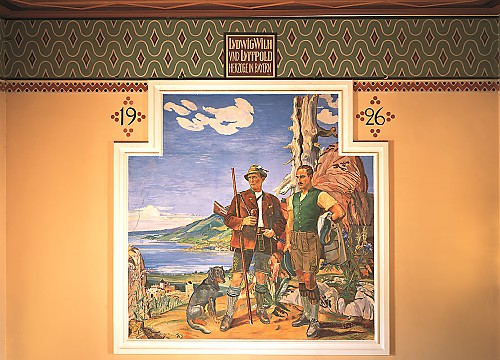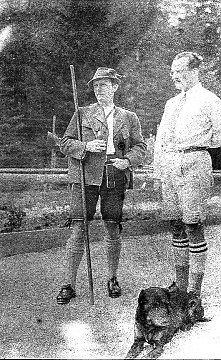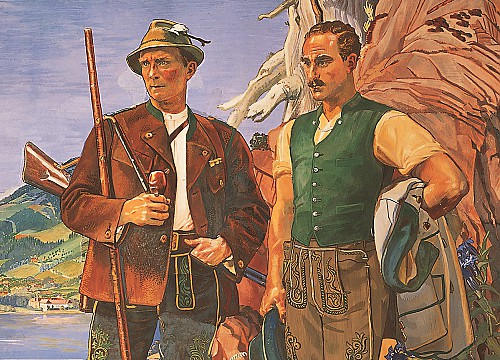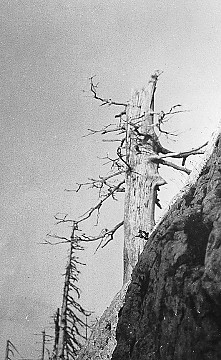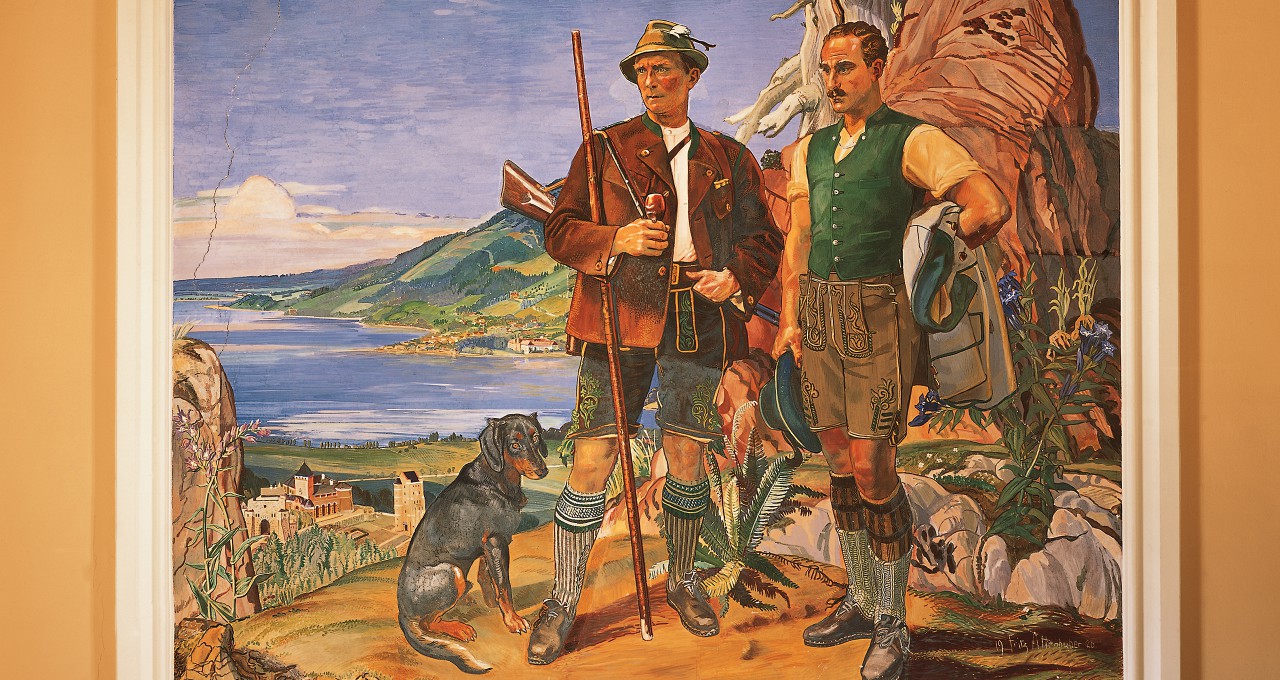
ABOUT
The stairwell which leads from the entrance hall to the first floor is fascinating owing to its stylistic diversity. With the oculi positioned above one another, it is made of sand-coloured ashlar. The Romanesque pillars in arcade sequence of the balustrade provide a certain lightness. The central focal point is the wall painting of the Dukes Luitpold and Ludwig Wilhelm in Bavaria. Their names can be read above the centre of the painting as part of the green and brown ornamental frieze. The date of the painting »1926« is visible at the top edge of the image on both sides.
The large-scale 4 by 4.5 metre fresco-secco shows the lord of the castle with his cousin Ludwig Wilhelm. The fresco makes subtle reference to the founding myth of the castle and the tragic family legend of the House »in Bavaria«. A withered tree trunk protrudes behind the two aristocrats. It is a reminder of the curse of a monk during the dissolution of the nearby Tegernsee Monastery. The monk prophesised that the worldly family that bought the secularised monastery would die out within 100 years. The House of Wittelsbach acquired the Monastery and both cousins were childless when the painting was produced. Luitpold and Ludwig Wilhelm discovered the Ringberg on a hunt and were so overwhelmed by the beauty of the view that a plan was developed to build a hunting lodge there.
Particularly striking is the valuable wooden ceiling. Various woods are combined in intricate inlaid work to produce geometric images dominated by circles and squares. Much in the layout of the castle and in the features of the four-winged complex is indeed concentrated in these geometric forms.
The artistic drawing up of the wall painting presented Friedrich Attenhuber with major challenges. The artist often used photographs as models for his paintings and tapestries. The model for the fresco, for example, was a photograph of Duke Luitpold and his cousin in hunting clothing. In reality, Duke Luitpold was taller than his cousin. However, as Duke Ludwig Wilhelm was head of the House of Wittelsbach line, Attenhuber had to paint him as being taller on the fresco than the lord of the castle.
As the work took over three years to complete, the impatient Duke wrote in a letter on 10 July 1926: »This summer is the last deadline that my so far inexhaustible patience will allow you.«
